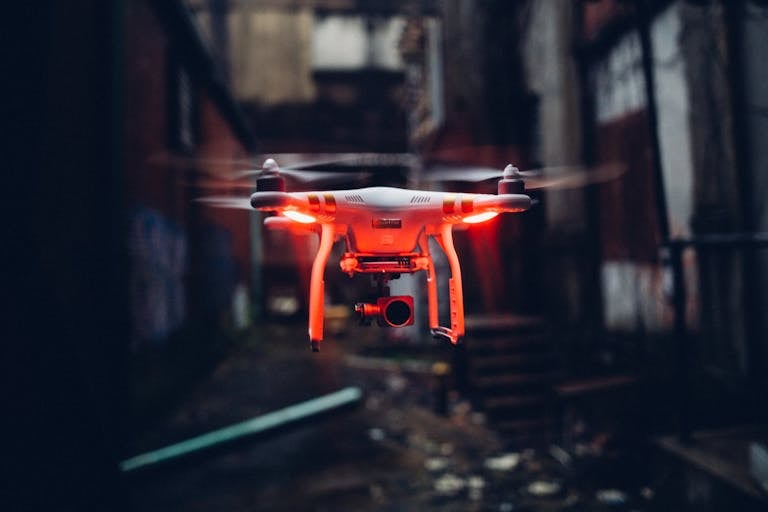The Impact of AI and Automation on The Economy
Introduction
Over the next few years, AI and automation will radically transform the global economy. Both intellectual and physical labor will be increasingly automated, reshaping entire industries and eliminating millions of traditional jobs.
The production of goods, the delivery of services, and the management of businesses will be dominated by machine-driven systems operating at a speed, scale, and efficiency that human labor cannot match. As automation spreads across every sector, human involvement in the economy will steadily decline, and the structure of economic activity itself will be fundamentally altered.
The End of Intellectual Labor
In the post-AI economy, intellectual labor will become almost entirely automated. AI systems will perform nearly all knowledge work with significantly greater speed, accuracy, and overall efficiency than humans.
Services such as software engineering, legal advisory, consulting, accounting, marketing, education, and financial analysis will lose their economic value. These professions will no longer exist in any meaningful form.
Initially, some human overseers will remain responsible for reviewing AI outputs. However, this oversight will quickly become less and less necessary as AI systems make fewer mistakes.
Even once these automated systems are perfected, some limited oversight may still be retained. This will primarily be due to regulatory requirements rather than any genuine need for human involvement.
At the same time, human reviewers themselves may increasingly be seen as an unnecessary risk, potentially leading to humans being outlawed from making decisions independently in certain high risk fields.
The Rise of Automation in Physical Labor
As white collar work disappears, physical labor will face its own automation risks. Humanoid robots, autonomous vehicles, and other specialized machines will enter mass production, automating hands-on work at an unprecedented scale.
Companies such as Tesla, Figure AI, and Agility Robotics are racing to build advanced humanoid robots capable of performing real-world labor. As they scale production, they plan to manufacture hundreds of millions of units to meet global demand. In transportation, Waymo and Tesla among many others are leading the push to replace human drivers with fully autonomous vehicles.
Initially, humans will work alongside these machines. However, as robotics improve and costs decrease, human workers will gradually be replaced, or the value of their labor will be pushed down to unsustainable levels. Warehouses, factories, construction sites, retail stores, restaurants, and transport networks will all begin to operate with little to no human involvement.
However, this rollout may not happen as quickly as the technology would allow. Protests, strikes, and destruction of robotics are likely to delay full-scale automation as societal unrest spreads due to rising levels of unemployment.
Remaining Employment Sectors
As AI and automation continue to advance, very few professions will remain resistant to automation, and even these will experience increasing or partial automation over time. For a full list of jobs that are safest from automation, you can refer to this guide.
Blue-Collar Industries Under Pressure
Traditional blue-collar industries will gradually shrink as automation pressure increases. Fields like manufacturing, construction, logistics, agriculture, and mining will see human workers steadily replaced by more capable machines. As automation becomes cheaper and more widespread, wages in these sectors will continue to be pushed down, further eroding the economic viability of human labor.
The spread of AI-powered troubleshooting will further accelerate this process. As AI improves, it will guide users through nearly any physical task, including plumbing, electrical repairs, and appliance servicing, reducing the reliance on skilled blue-collar workers in residential trades.
Personal Services
Some personal service jobs such as childcare, therapy, pet care, and social work will be significantly more resistant to automation than other sectors, mainly because some individuals will still prefer human interaction for certain services.
However, even these fields will not remain untouched. Many people will be willing to use robotic childcare, therapy bots, or automated pet care services, especially when the cost is significantly lower and the services offer their own unique advantages.
Human Performance and Interaction
Jobs centered on unique human performance and presence may retain greater protection from automation. Famous actors, live performers, professional athletes, religious leaders, and others whose value comes from their specific humanity might maintain their positions, even as their support teams and behind-the-scenes roles are largely replaced by AI.
Human Oversight Roles
Some jobs will survive primarily due to legal or regulatory requirements rather than because their labor is still necessary. Depending on the country, professions such as police officers, court lawyers, judges, safety inspectors, regulatory auditors, engineers, and scientific researchers responsible for verifying critical systems may continue to require human presence for final approvals or decision-making.
However, even these jobs will experience increasing automation in the background, with AI systems performing most of the analytical and administrative work while humans potentially serve as the final sign-off authority, and eventually the human in loop may be considered an unnecessary added risk.
Labor Market Dynamics
The displacement of intellectual workers will create enormous pressure on the remaining job markets. Former software engineers, lawyers, designers, accountants, and other knowledge workers will be forced to compete for the dwindling number of positions in other fields that haven’t yet been automated.
This massive influx of labor supply will naturally drive wages down across these sectors. Even jobs that were once relatively well-compensated will see their earning power diminish as desperate former knowledge workers flood the market.
Competition for any remaining human job will become fiercer than at any point in modern economic history. Skills that once commanded premium salaries will become essentially worthless, while the few skills machines cannot yet replicate will briefly become valuable—until they too are automated.
Universal Basic Income
The response to mass unemployment will vary significantly depending on the country, especially its wealth and political orientation. Conservative governments are much less likely to implement robust safety nets, while even more “progressive” governments will face severe fiscal constraints.
Even in countries that do implement a Universal Basic Income (UBI), it’s unlikely to be enough to sustain a middle-class lifestyle. The payments will likely be significantly less than current unemployment benefits in many countries. This is simple economics – providing even minimum wage level support to hundreds of millions of displaced workers would cost trillions of dollars annually.
The money must come from somewhere, and governments around the world will face difficult choices about taxation and spending priorities as they face compounding societal unrest.
New Forms of Social Organization
In many countries, governments will likely create new forms of social organization to prevent unrest and societal collapse. This may include mandatory community service, public works programs, or subsidized labor in sectors that haven’t been fully automated.
These programs probably won’t resemble meaningful careers as we understand them today. Instead, they will function primarily as mechanisms to distribute minimal resources while maintaining social order.
The Data Economy
One new economic sector likely to emerge centers on personal data. Data was already valuable to companies before AI, but machine learning models have exponentially increased its worth. They can ingest, assimilate, and analyze massive amounts of information to create comprehensive models of the world.
This dynamic will likely create a new part of the economy revolving around people selling their personal data, experiences, behaviors, and even thoughts for AI models to consume and refine their predictions.
Individuals might earn a supplementary income by allowing AI to monitor their daily activities, record their conversations, track their movements, and analyze their preferences.
Conclusion
The economy after AI will bear little resemblance to what came before. Mass automation of both intellectual and physical labor will fundamentally reshape human society, eliminating traditional employment opportunities for the majority of the population.
The remaining jobs will face intense competition, driving down wages and working conditions. Government responses will likely be insufficient to maintain previous living standards for most citizens.
New forms of social organization will likely emerge to distribute resources and maintain social order, and their structure will determine the quality of life for billions of people in the coming decades.


